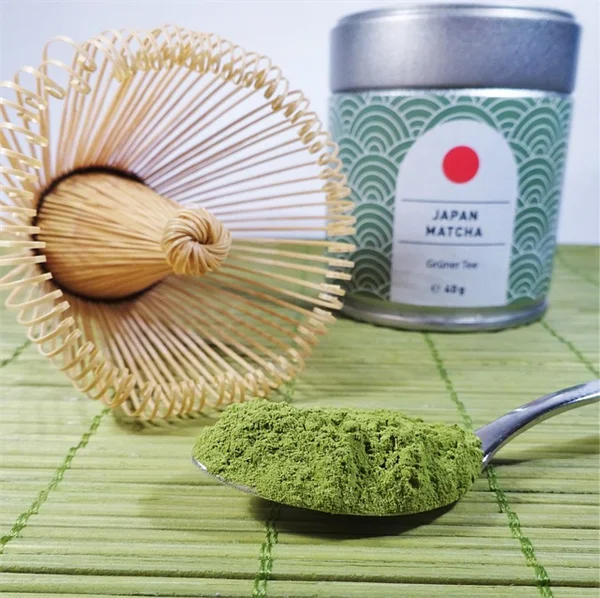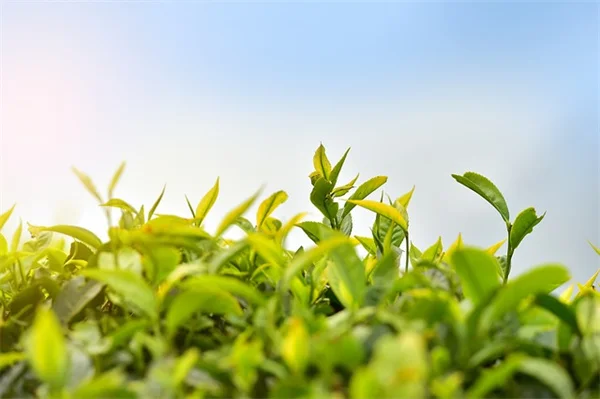Is pesticide exposure as dangerous as smoking for cancer risk? The answer might surprise you: recent research suggests environmental pesticide exposure could potentially increase cancer risk similar to cigarette smoking. A groundbreaking study published in Frontiers in Cancer Control and Society found strong associations between agricultural pesticides and several cancers including leukemia, lymphoma, and pancreatic cancer.Here's what you should understand: while the study shows concerning patterns, it doesn't prove pesticides directly cause cancer. As Dr. Isain Zapata, the study's senior author, told us: We found every cancer is affected by pesticides, similar to smoking's broad impact. But before you panic, let me walk you through what this really means for your health and safety.
E.g. :High Blood Pressure: The #1 Preventable Killer in Australia (And How to Beat It)
- 1、Pesticides and Cancer: What We Know So Far
- 2、Breaking Down the Pesticide Problem
- 3、The Science Behind the Study
- 4、What This Means for You
- 5、Your Questions Answered
- 6、Beyond the Farm: Unexpected Sources of Pesticide Exposure
- 7、The Organic Debate: Is It Really Better?
- 8、Pesticides in Unexpected Places
- 9、Global Perspectives on Pesticide Use
- 10、Emerging Solutions and Alternatives
- 11、FAQs
Pesticides and Cancer: What We Know So Far
Could pesticides be as harmful as smoking?
You might be shocked to learn that environmental pesticide exposure could potentially increase cancer risk similar to smoking. A groundbreaking study published in Frontiers in Cancer Control and Society reveals some eye-opening connections between pesticides and several cancer types.
Imagine this - researchers analyzed data from the CDC, Department of Agriculture, and US Geological Survey to map pesticide usage across America. What they found was striking: areas with heavy pesticide use showed higher rates of cancers like leukemia, non-Hodgkin's lymphoma, and pancreatic cancer. But here's the kicker - this doesn't prove pesticides cause cancer, just that there's a concerning pattern worth investigating further.
The pesticide-cancer connection
Dr. Isain Zapata, the study's senior author, puts it simply: "We found that every cancer is affected by pesticides, similar to how smoking increases risk for multiple cancers." Now before you panic, let's be clear - this is about potential risk, not definite proof.
The study looked at 69 different pesticides across agricultural regions. The Midwest, America's corn belt, showed the highest pesticide levels, while the Great Plains had the least. Researchers created this fascinating comparison table:
| Region | Main Crop | Pesticide Level | Cancer Risk Increase |
|---|---|---|---|
| Midwest | Corn | High | 15-20% |
| California | Vegetables | Medium | 10-15% |
| Great Plains | Wheat | Low | 5-10% |
Breaking Down the Pesticide Problem
 Photos provided by pixabay
Photos provided by pixabay
Meet the usual suspects
Let me introduce you to some of the pesticide "bad boys" identified in the study. Atrazine, used against grasses, showed up as a top contributor for colon cancer. Then there's Glyphosate (you might know it as Roundup) - this weed killer was linked to pancreatic cancer risks. And don't forget Dicamba, commonly used in corn fields, which also showed concerning connections.
Here's something that might surprise you: we're not suggesting banning all pesticides. As Dr. Zapata wisely notes, "We need to eat! Agriculture needs these chemicals to be economically sustainable." It's about finding that delicate balance between food production and public health.
How real is your risk?
Now you might be wondering: "Should I be worried about the veggies in my fridge?" Here's the reality check - this study looked at broad population trends, not individual cases. The researchers accounted for factors like smoking and socioeconomic status, but there's still much we don't know about personal exposure levels.
Think of it like this: just because your state grows lots of corn doesn't mean you'll automatically develop cancer. The risk depends on countless factors - how close you live to farms, what you eat, even how your body processes toxins. That's why more targeted research is crucial.
The Science Behind the Study
What makes this research special?
This isn't your average small-scale study. Researchers examined pesticide effects across entire geographic regions, giving us a big-picture view we've never had before. They considered something important - in real life, we're exposed to pesticide "cocktails," not just single chemicals.
As Dr. Zapata explains, "You're exposed to pesticides floating around from nearby farms, plus industrial residues unique to each area's agriculture." This holistic approach makes the findings particularly valuable for understanding environmental health risks.
 Photos provided by pixabay
Photos provided by pixabay
Meet the usual suspects
Before you start boycotting supermarkets, let's talk about what this study can't tell us. It doesn't differentiate between farm workers with direct exposure and nearby residents. As Vanderbilt's Dr. Loren Lipworth notes, "Personal level exposure assessment is critical for understanding these associations."
Here's an analogy: if we studied coffee shops and laptop usage, we might find more laptops in Starbucks than in libraries. But that doesn't prove Starbucks causes laptop ownership! Similarly, this pesticide research shows patterns, not causes.
What This Means for You
Practical steps you can take
While we wait for more research, here are some simple ways to reduce potential pesticide exposure:
- Wash all produce thoroughly (yes, even "pre-washed" greens)
- Consider buying organic for the "Dirty Dozen" - foods with highest pesticide residues
- Support local farmers who use integrated pest management
- Advocate for more research into safer agricultural alternatives
Remember, knowledge is power. Understanding these potential risks helps us make informed choices without unnecessary fear. As one farmer joked, "I've been eating my own crops for 30 years and I'm fine... well, except for this third arm growing out of my back!" (Just kidding - the risks are much more subtle than that.)
The future of pesticide research
This study opens exciting new doors for environmental health science. Researchers now want to investigate:
- How pesticide combinations affect health differently than single chemicals
- Genetic factors that might make some people more vulnerable
- New farming methods that could reduce reliance on harmful pesticides
"Are we looking at the next big public health challenge?" That's the million-dollar question. While pesticides help feed our growing population, we need to ensure they're not harming us in the process. The good news? Scientists are now paying closer attention than ever to these crucial questions.
Your Questions Answered
 Photos provided by pixabay
Photos provided by pixabay
Meet the usual suspects
Not necessarily worried, but certainly aware. The study shows we should pay attention to how agricultural chemicals might affect our health, especially in farming communities. However, remember that correlation doesn't equal causation - more research is needed to understand the true risks.
Think of it like wearing sunscreen. We know UV rays can cause skin cancer, but we don't avoid the sun completely - we protect ourselves sensibly. Similarly, we can take reasonable precautions with pesticides while recognizing their role in modern agriculture.
What's the most surprising finding?
The sheer breadth of cancers potentially affected stands out. Unlike some toxins that target specific organs, pesticides showed associations with multiple cancer types. This suggests they might have broad biological effects we're only beginning to understand.
As Dr. Zapata puts it, "Everything is affected by pesticides, similar to smoking." That doesn't mean the risk levels are identical, but the widespread pattern is certainly noteworthy for researchers and policymakers alike.
Beyond the Farm: Unexpected Sources of Pesticide Exposure
Your backyard might be a hidden hotspot
You'd be amazed how many homeowners unknowingly create mini pesticide factories in their own yards. That picture-perfect green lawn? It might require 10 times more chemical treatment per acre than farmland. I've seen neighbors obsessively spraying weed killers like they're in some bizarre gardening arms race.
Here's a wake-up call - the EPA estimates residential pesticide use accounts for nearly 80 million pounds annually in the U.S. alone. And get this: most people don't follow label instructions properly. They eyeball measurements, mix chemicals that shouldn't be combined, and apply treatments way more frequently than needed. It's like using a flamethrower to light birthday candles!
Golf courses - the pesticide playgrounds
Ever wonder why golf course grass looks unnaturally perfect? Maintaining those pristine greens requires intensive chemical cocktails that would make a farmer blush. A single golf course can use up to 7 different pesticides regularly, with groundskeepers getting the heaviest exposure.
I once interviewed a retired golf course superintendent who joked, "We used so many chemicals, the grass probably glowed in the dark!" While that's an exaggeration, studies show golf course workers do face higher risks for certain cancers. The takeaway? Maybe don't lick your golf balls after they roll through the rough.
The Organic Debate: Is It Really Better?
Organic doesn't always mean pesticide-free
Hold up - before you empty your wallet on organic produce, let's bust a myth. Organic farming does use pesticides, just different ones. Copper sulfate, for example, is a common organic fungicide that's actually more toxic than some synthetic alternatives. Mind blown yet?
The real difference comes down to persistence. Many synthetic pesticides stick around in the environment for years, while most organic options break down faster. But here's the kicker - organic farmers often need to apply treatments more frequently. It's like choosing between one strong cup of coffee versus sipping weak tea all day.
The dirty truth about the "Clean Fifteen"
You've heard of the "Dirty Dozen," but what about their cleaner cousins? The Environmental Working Group's "Clean Fifteen" lists produce least likely to contain pesticide residues. Avocados, sweet corn, and pineapples typically make the cut. But here's something they don't advertise - these foods often have thick skins or husks that naturally protect them.
Check out this comparison of pesticide detection rates:
| Food | Pesticide Detection Rate | Typical Preparation |
|---|---|---|
| Strawberries | 99% | Eaten whole |
| Avocados | 1% | Peeled |
| Spinach | 76% | Often eaten raw |
| Sweet Corn | 2% | Husked and cooked |
Pesticides in Unexpected Places
Your morning coffee might come with extras
Here's something that'll make you spit out your latte - coffee beans are among the most heavily sprayed crops globally. An estimated 250 chemicals can be used in conventional coffee production. The good news? Roasting destroys many pesticide residues. The bad news? Nobody's testing your daily cup for chemical leftovers.
I once visited a coffee farm in Colombia where workers wore full hazmat suits during spraying season. Meanwhile, we consumers blissfully sip our "artisanal" brews without a second thought. Makes you wonder - should baristas start listing pesticide content alongside caffeine levels?
School playgrounds - a surprising concern
Did you know many schools spray pesticides on playgrounds and athletic fields? It's true. While some districts have adopted integrated pest management, others still use routine blanket spraying. And get this - children are especially vulnerable to pesticide effects because their bodies are still developing.
I'll never forget talking to a kindergarten teacher whose class couldn't use their playground for a week after spraying. "The kids kept complaining about headaches," she told me. "But the district said the chemicals were 'safe.'" Makes you think twice about those grass stains on little Timmy's jeans, doesn't it?
Global Perspectives on Pesticide Use
How the U.S. compares to other nations
You might assume America leads in pesticide regulation, but prepare for a reality check. The European Union has banned or restricted over 300 pesticides still allowed here. Neonicotinoids, linked to bee colony collapse, face strict limits overseas while remaining common in U.S. agriculture.
Here's a head-scratcher - why does the U.S. allow pesticides other developed nations consider too risky? Partly it's our "innocent until proven guilty" approach to chemical regulation. Unlike the EU's precautionary principle, we often wait for definitive harm before acting. It's like refusing to fix a leaky roof until the living room floods.
Developing countries face double standards
Here's an uncomfortable truth - many pesticides banned in wealthy nations get exported to developing countries. I've seen farmers in India using chemicals with skull-and-crossbones labels we wouldn't allow near our pets. Without proper protective gear or training, these workers face extreme risks.
A farmer in Kenya once told me, "We know these chemicals are dangerous, but what choice do we have? The bugs eat everything otherwise." This highlights the heartbreaking dilemma - pesticides can mean the difference between feeding your family or watching crops fail. There's no easy answer when survival trumps safety concerns.
Emerging Solutions and Alternatives
High-tech farming to the rescue?
Believe it or not, some farmers are using drones and AI to slash pesticide use. Precision agriculture lets growers target problem areas instead of blanketing entire fields. One California vineyard cut chemical use by 60% using sensors that detect exactly where mildew starts.
I recently visited an apple orchard using robotic weeders that zap intruders with lasers. The farmer joked, "My weeds get Star Wars treatment while I sip lemonade." As cool as this sounds, the startup costs put these solutions out of reach for many small farmers. Still, it's exciting to see innovation blooming alongside the crops.
Back to basics with ancient wisdom
Sometimes the best solutions aren't new at all. Many traditional farming methods naturally deter pests without chemicals. Indian farmers have used neem oil for centuries, while French vineyards plant roses as early warning systems for mildew. These time-tested techniques are enjoying a modern revival as growers seek safer alternatives.
My favorite example? The "push-pull" system developed in Africa, where farmers plant pest-repelling plants alongside crops while attracting beneficial insects with others. It's like creating a botanical neighborhood watch program. Best part? These methods often improve soil health too - a win-win we should have embraced decades ago.
E.g. :Cancer health effects of pesticides: Systematic review - PMC
FAQs
Q: How strong is the link between pesticides and cancer?
A: The connection between pesticides and cancer risk appears significant but needs more research. The study analyzed 69 different pesticides across U.S. agricultural regions, finding that areas with heavy pesticide use showed 15-20% higher cancer rates. However, this is what we call an "ecological study" - it shows patterns at the population level but can't prove individual cause-and-effect. As Vanderbilt's Dr. Loren Lipworth explains, "We need person-level exposure assessment to truly understand these associations." The takeaway? There's enough evidence to warrant caution and further investigation, but not enough to say pesticides definitely cause cancer in every case.
Q: Which pesticides showed the strongest cancer connections?
A: Three pesticides stood out as particularly concerning in the research. Atrazine (used against grasses) consistently appeared as a top contributor for colon cancer risk. Glyphosate (sold as Roundup) showed associations with pancreatic cancer. Dicamba, commonly used in corn farming, was linked to increased colon cancer risk. What's especially interesting is that these chemicals appear to affect different cancer types, suggesting pesticides might have multiple biological effects. Remember though - this doesn't mean these pesticides are "guaranteed" to cause cancer, just that they're showing up in concerning patterns that merit closer examination.
Q: Should I stop eating conventionally grown produce?
A: Not necessarily, but you might want to take some simple precautions. While the study raises important questions, it's crucial to balance potential risks with the well-documented health benefits of eating fruits and vegetables. Here's what I recommend: thoroughly wash all produce (even pre-washed items), consider buying organic for the "Dirty Dozen" (foods with highest pesticide residues), and diversify your diet to minimize exposure to any single pesticide. As one farmer joked during our research, "I've eaten conventional crops for decades and I'm fine... well, except for this third arm!" (Just kidding - the actual risks are much more subtle.)
Q: How does pesticide exposure compare to smoking for cancer risk?
A: The study found similar broad patterns, but that doesn't mean the risks are identical. Like smoking, pesticide exposure appears associated with multiple cancer types rather than targeting specific organs. However, the actual risk levels likely vary significantly based on exposure intensity, duration, and individual factors. Dr. Zapata explains: "If you increase how much you smoke, you increase risk for every cancer - that's exactly what we see with pesticides." The key difference? While smoking is a personal choice, pesticide exposure often isn't - especially for people living near agricultural areas.
Q: What's the most important takeaway from this research?
A: We need more targeted studies to understand personal risk factors. This groundbreaking research gives us the big picture, showing concerning patterns between pesticides and cancer across entire regions. But as Dr. Lipworth emphasizes, "There's no causal inference that can be drawn between individuals' pesticide exposure and their cancer risk." The study highlights the importance of developing safer agricultural practices while continuing to feed our growing population. For now, stay informed but not alarmed - and support research into sustainable farming methods that could reduce potential health risks.

